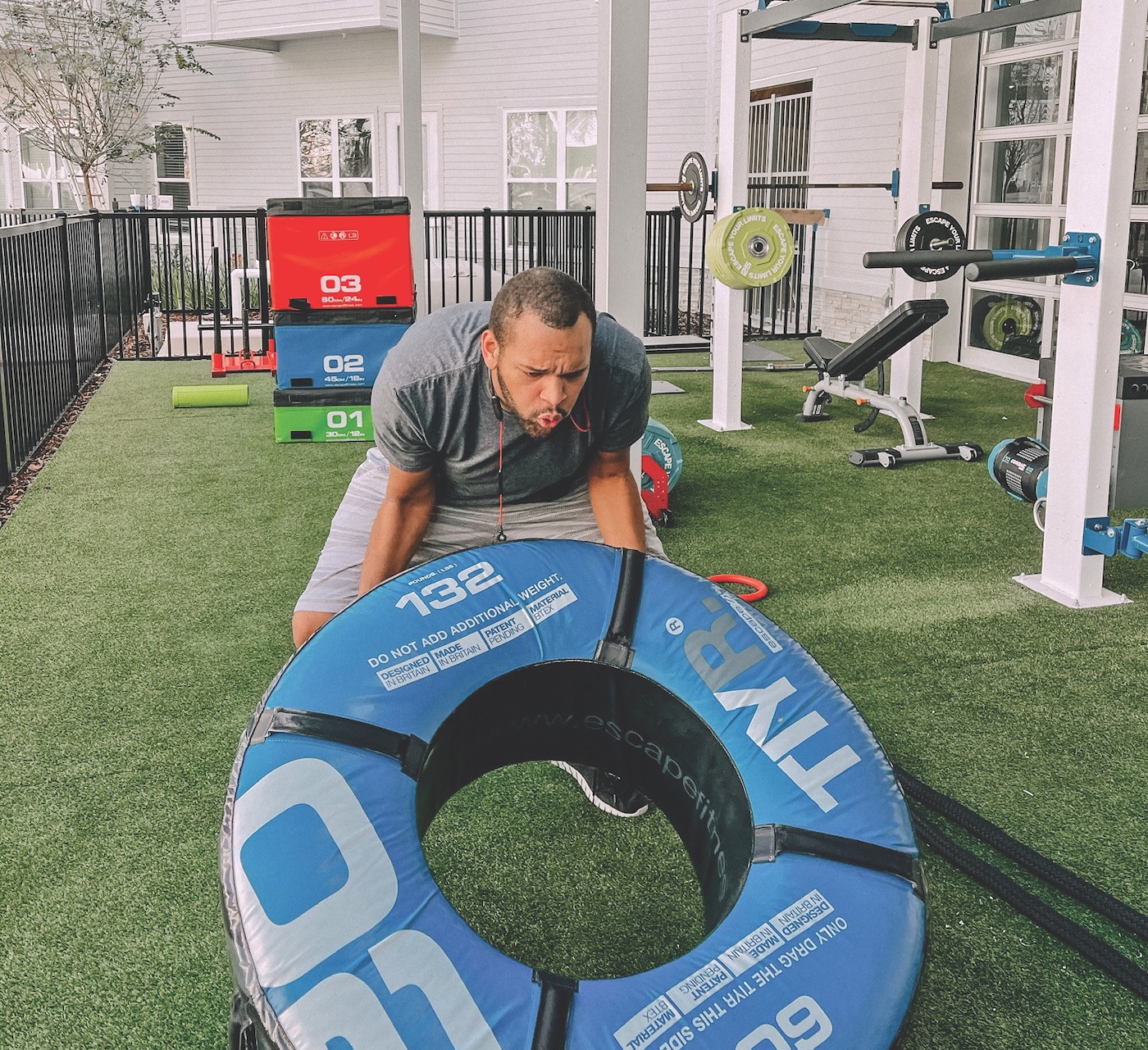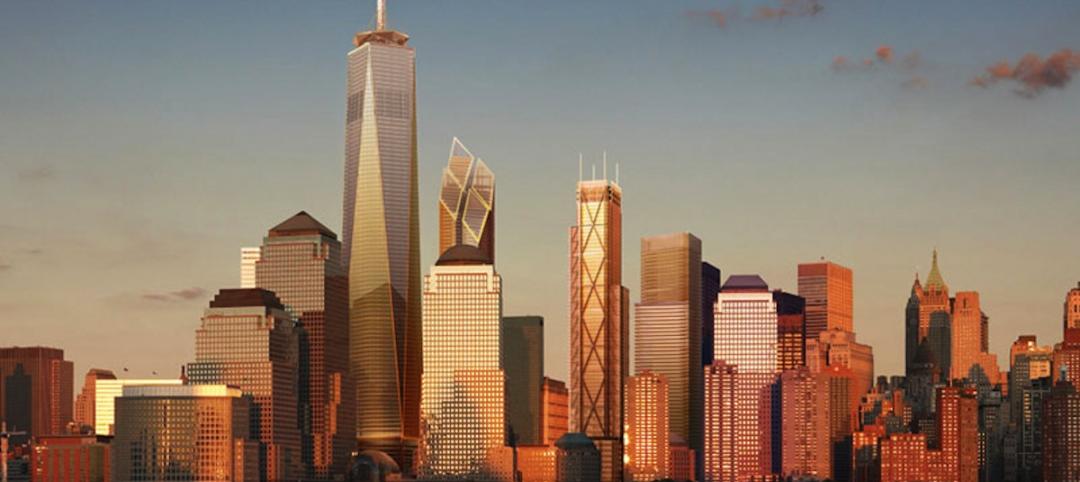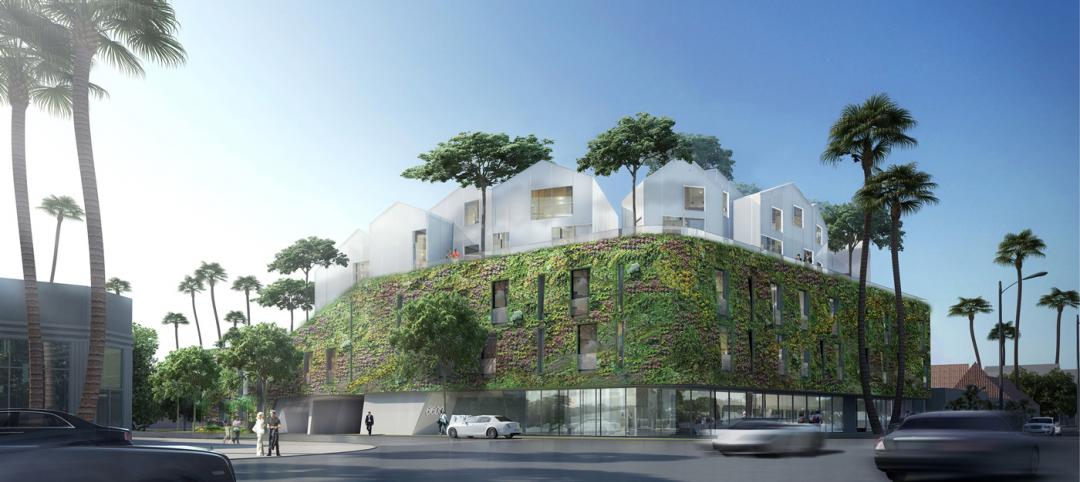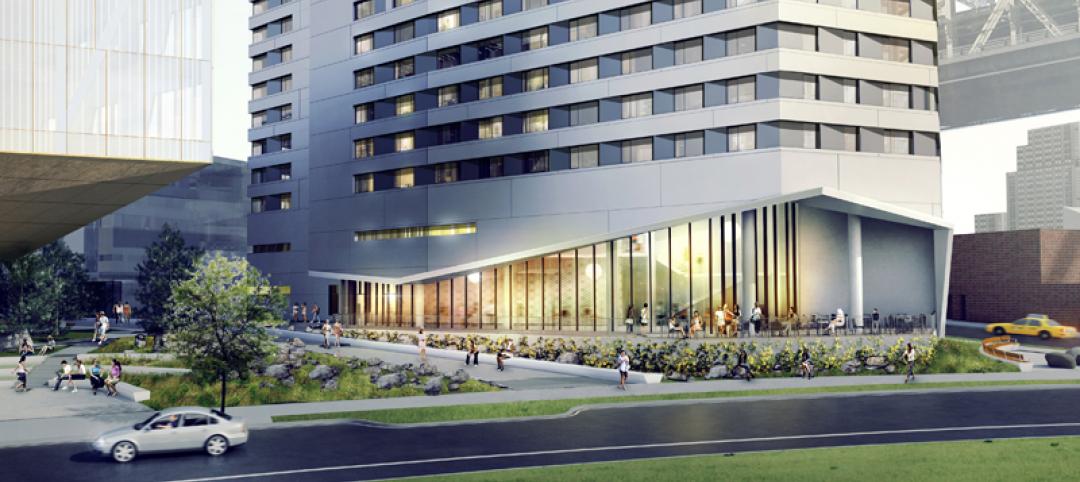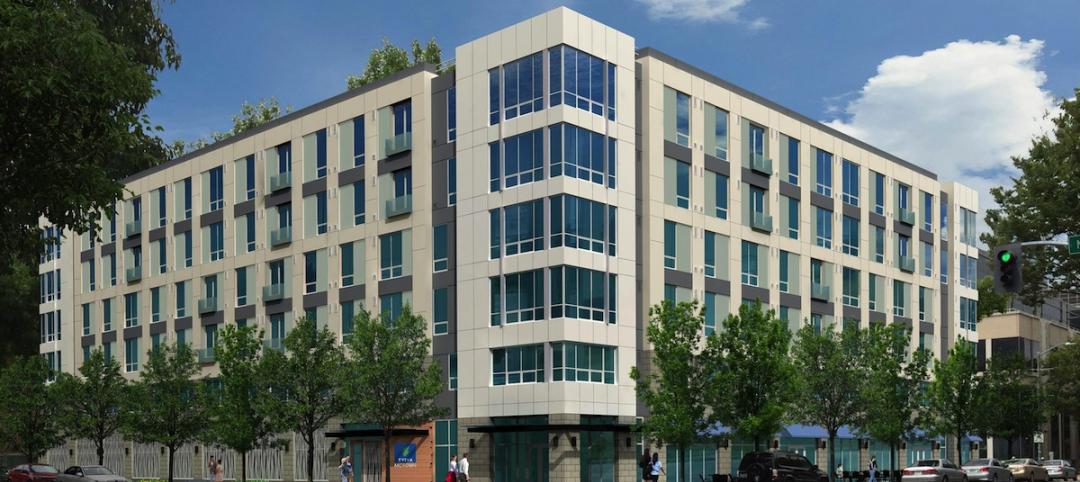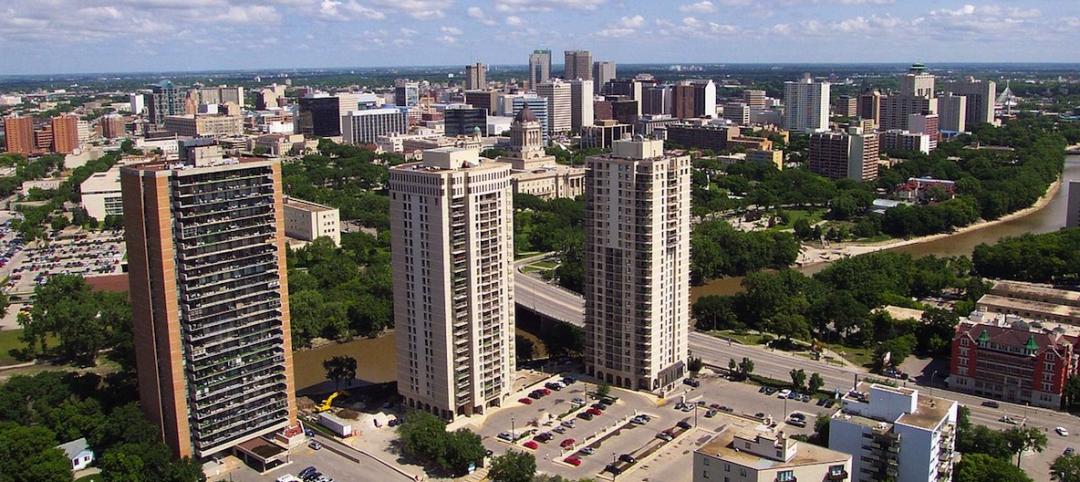The pandemic hit some building sectors, notably hospitality, extremely hard, while others—warehouses, cold storage, and life science facilities—have experienced an unexpected bump thanks to the pandemic.
Meanwhile, multifamily housing keeps rolling merrily along. The U.S. Census Bureau (“Construction Spending,” January 2021) estimated multifamily construction at $92.7 billion for 2021, up 16.9% year over year. That makes multifamily the second-largest commercial construction sector, after Education ($106.2 billion). As one multifamily developer put it (in response to our exclusive “Amenities Survey 2021”), “We have 1,250 units under construction and 2,000 on the boards.” What, me worry?
For our third Multifamily Amenities Survey, we asked multifamily developers, architects, contractors, and others in the sector how the pandemic had affected the amenities they provided for their rental, condominium, senior living, and student housing communities. Free download: Multifamily Amenities 2021 report
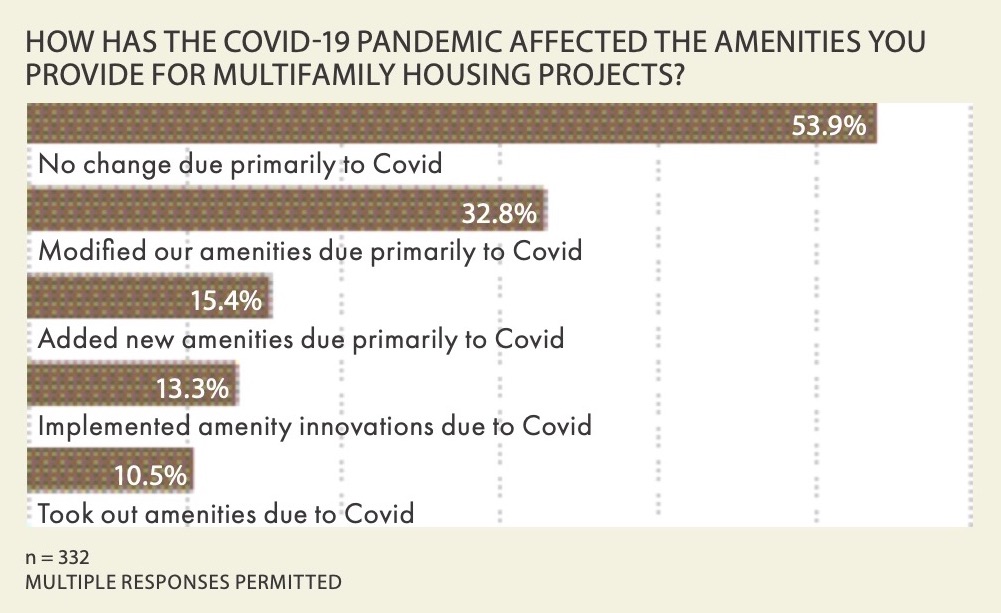 The majority of respondents to our “Amenities Survey 2021” said they had not changed their amenities due primarily to the pandemic, but others said they had modified, added, or removed amenities or introduced amenity innovations.
The majority of respondents to our “Amenities Survey 2021” said they had not changed their amenities due primarily to the pandemic, but others said they had modified, added, or removed amenities or introduced amenity innovations.
COVID’S EFFECT ON MULTIFAMILY AMENITIES: NOT SO MUCH
Perhaps the most surprising finding was that most respondents (53.9%) said they had made no changes to their amenities due to Covid. “We have not cut back the usual high-quality amenities,” said one respondent. Said another, “Our projects are anticipated to be completed in the future and clients believe Covid will be behind us.”
Others were too far down the construction path to make changes. “No change,” said Christopher L. Gartner, PE, CEO of Texas project management firm Gartner & Associates, “we’re thinking life goes back to a more normal condition soon.”
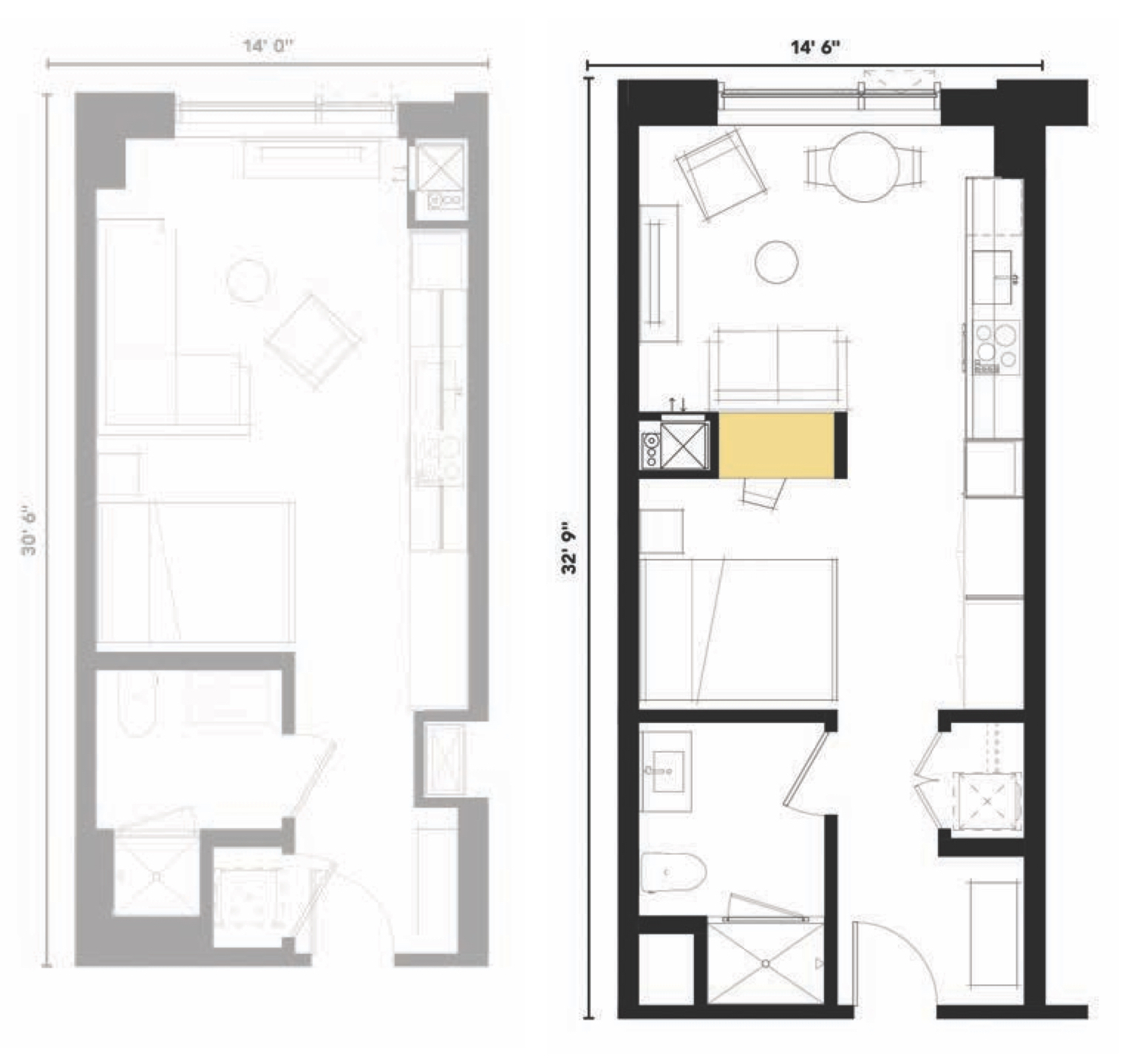 R. Vickie Alani, AIA, Principal at Boston-based CBT, has developed floor plans to create workspaces by adding a little footage to studio and one-bedroom apartments. Here, a 427-sf studio is lengthened six inches and widened two feet three inches, resulting in a 474-sf unit with a workspace. See: https://bit.ly/3h1dpao for more CBT floor plans.
R. Vickie Alani, AIA, Principal at Boston-based CBT, has developed floor plans to create workspaces by adding a little footage to studio and one-bedroom apartments. Here, a 427-sf studio is lengthened six inches and widened two feet three inches, resulting in a 474-sf unit with a workspace. See: https://bit.ly/3h1dpao for more CBT floor plans.
MAKING ‘MODIFICATIONS’ TO MULTIFAMILY AMENITIES
Some respondents (10.5%) said they had eliminated or mothballed amenities in light of CDC guidelines and state/local mandates. “We had to remove the free coffee bar,” said Cameron Anderson, Vice President of Construction, Westchase Construction Ltd., Houston.
Other responses: “Exercise rooms were closed, then reopened with limited access.” “Some of our retail closed entirely.” One respondent simply removed some furniture in common areas. Many respondents said they closed recreation amenities like dog parks, children’s playgrounds, volleyball courts, and game rooms, at least until their local social distancing guidelines loosened up.
At Hickory Hills East, Great Mills, Md., Raleigh Apt. Management removed all pool furniture, “but we allowed residents to bring their own chairs,” said a respondent. But “residents were very angry” when operators had to close fitness centers and swimming pools, said another respondent.
The second-largest group of respondents, nearly one-third (32.8%), said they had made efforts to “modify” amenities due to Covid, often through simple means: “Made dining areas larger so tables/chairs could be farther apart.” One reported benefiting from the pandemic: “Our workload has increased due to Covid. Clients are coming back to us to design Covid retrofits of existing buildings.”
WFH—’MORE SPACE, PLEASE’
Multifamily project teams had to scramble to accommodate the overwhelming demand for work-from-home spaces for adults and study spaces for children. Neil Liebman, AIA, LEED AP, Managing Principal, said his firm, Bernardon, had “allocated space for a desk in all units, either in the bedroom or living spaces.” Jeff Mulcrone, AIA, Associate | Design Director in the Chicago office of BSB Design, said his firm is looking at adding 35-50 sf per unit to create WFH nooks.
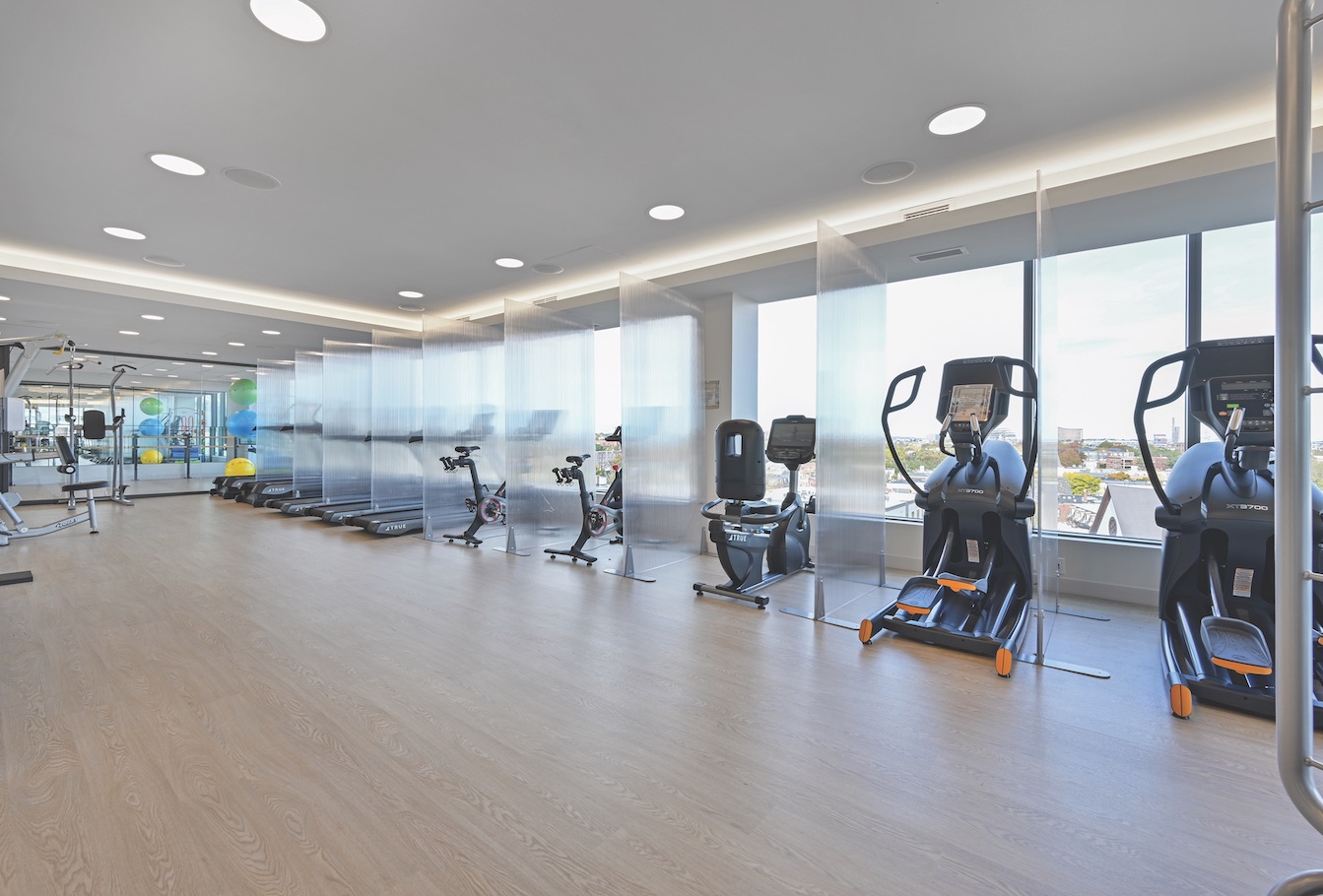 At Market Central, Boston, architecture firm CBT specified plexiglass separators to be placed between pieces of fitness equipment in response to Covid conditions. The plexiglass units were set on pads so that they could be moved easily. Twining Properties was the developer. Photo: @Flauntboston
At Market Central, Boston, architecture firm CBT specified plexiglass separators to be placed between pieces of fitness equipment in response to Covid conditions. The plexiglass units were set on pads so that they could be moved easily. Twining Properties was the developer. Photo: @Flauntboston
In addition to “larger units,” other WFH actions respondents had taken or were considering included:
• “In-unit work nooks”
• “Isolation suites”
• “Private phone booths” in business centers
• Greater emphasis on sound transmission between units
• “Need for solid Internet speed and bandwidth”
• “Varied environments,” based on cues from coworking spaces
Coworking spaces were a hot topic among respondents, one of whom stated, “In one project, we converted an entire floor to coworking space.”
PACKAGE CENTERS—THE FOOD/CARDBOARD EXPLOSION
The pandemic tested the limits of multifamily package centers, not only the “overwhelming volume and frequent theft” cited by one respondent, but also the immense piles of cardboard waste from all those delivery boxes. Respondents also reported adding grocery lockers and cold storage units to their package centers to handle the flood of bulk food and meal deliveries.
BREATHE DEEP: HEALTH AND WELLNESS WORRIES
Many respondents heeded the call for more stringent health and wellness measures to counter the virus. “Touchless controls/access,” “touchless doors and elevators,” “sensor-driven technology” were all cited. As one of them said, “We’re rethinking and reimagining our amenities packages to be safer, healthier.”
Among the health/wellness options cited by respondents:
• Antibacterial countertop surfaces
• Ultraviolet lamps to destroy microbes
• Touchless faucets in kitchens and bathrooms
• Hand-sanitizing stations in common areas
• Sliding doors at the entry to the leasing office
• Easily cleanable furniture
Stephanie Kirkpatrick, IIDA, ASID, LEED AP, Principal, Director of Interior Design, Niles Bolton Associates, told Horizon TV’s “The Weekly” (https://bit.ly/3vFIEf2) that “there may even be a movement to vinyl” due to that material’s cleanability.
One developer of affordable rentals closed all their common laundry facilities and installed washer/dryer combos in individual apartments as a health and wellness measure. “We have also considered one bath per bedroom to help with the quarantine,” said this responder.
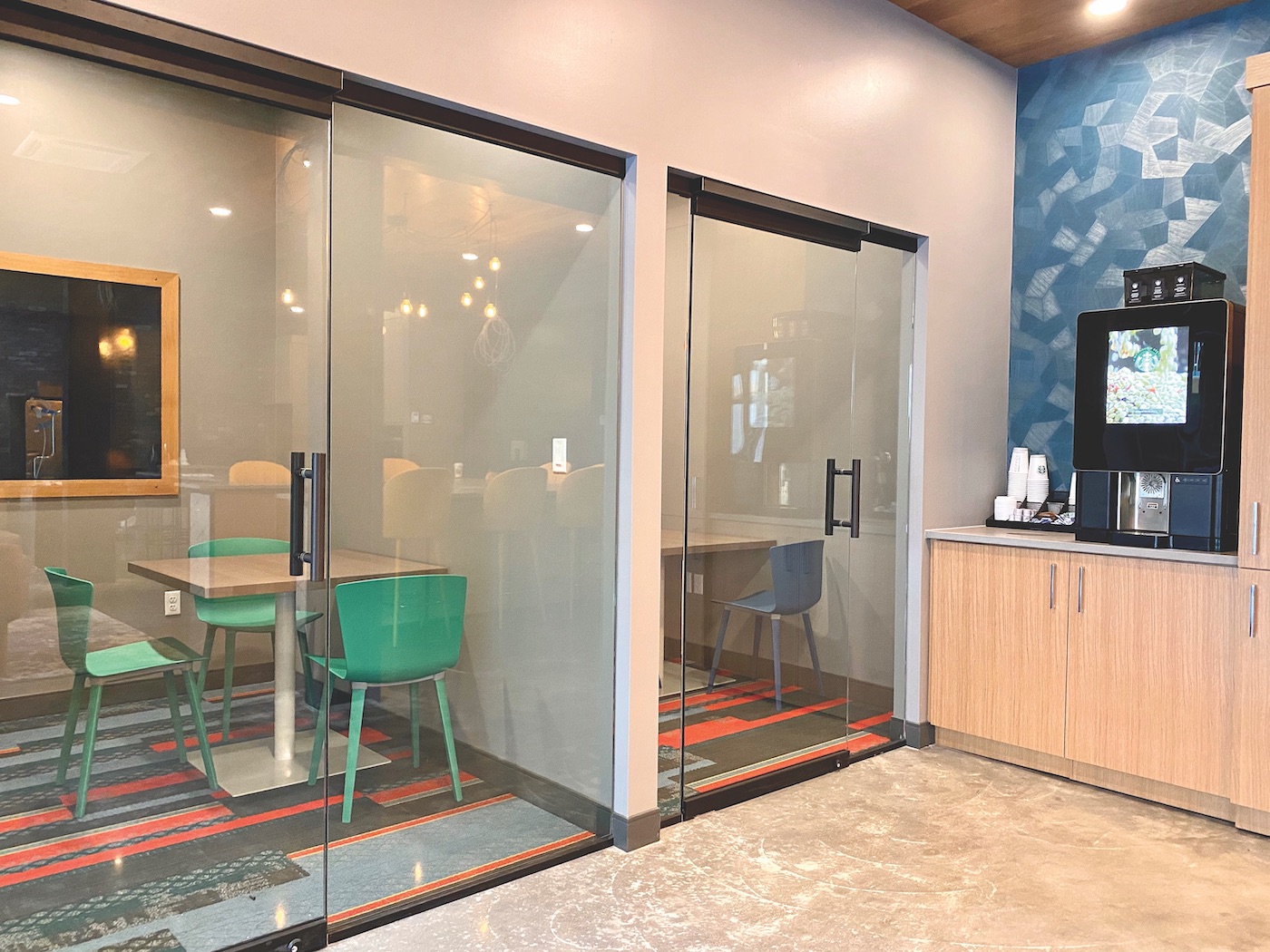 VE Design Group and Blair Kweskin Design, the interior designers on Hue, St. Louis, incorporated private offices into the business center. Covid-related “isolation pods” like this were mentioned by several Amenities Survey 2021 respondents. Green Street St. Louis was the developer on the 111-apartment complex. Photo: Square One - www.squareonepros.com
VE Design Group and Blair Kweskin Design, the interior designers on Hue, St. Louis, incorporated private offices into the business center. Covid-related “isolation pods” like this were mentioned by several Amenities Survey 2021 respondents. Green Street St. Louis was the developer on the 111-apartment complex. Photo: Square One - www.squareonepros.com
Healthier indoor air quality was a big item for respondents, who cited “HVAC upgrades,” “improved HVAC systems/filtration,” and “larger air purification systems.” One respondent was adding “commissioning of HVAC services” for existing projects. Another noted: “Installing air-purification systems at retrofit, in amenity spaces and elevators.” One predicted, “We will be adding air-purification systems to our amenity areas in future developments.”
GREATER ACCESS TO THE GREAT OUTDOORS
Access to nature and the outdoors captured the imagination of respondents. One pledged to “add more outdoor amenities to allow for social distancing.” Another said, “We’ve been asked to double/triple exterior areas” in upcoming projects. One respondent’s strategy was to “disperse amenities throughout the project rather than in one mega-amenity.” Yet another cited “proximity to parks” as a factor in future project location decisions.
Balconies gained attention as a means to reduce stress and the sense of isolation brought on by the pandemic. One respondent was able to capitalize on this in a project that was still in Design Development: “We added exterior balconies to every apartment.”
‘COVID EFFECT’: HOW LONG WILL IT LAST?
The long-term effect of the pandemic on multifamily amenities is hard to calculate. Can developers really afford larger unit sizes to squeeze in work-from-home nooks? Will multifamily design teams “incorporate better distancing into future projects,” as another suggested? Or will the multifamily sector revert to business as usual as soon as face masks are no longer mandatory?
Still, the long-term psychological impact of the worldwide pandemic cannot be underestimated. Even as many multifamily teams strive to create more of a sense of “community” in their projects, the pandemic “has taken the personality and companionship and human interaction out of play,” according to one respondent.
Will the multifamily sector—and society at large—find the means to overcome that malaise?
Related Stories
High-rise Construction | Jul 7, 2015
Bjarke Ingels designs Frankfurt skyscraper with a surprise in the middle
Several levels in the center of the 185-meter tower are shifted outward to allow for terraces with city views.
Multifamily Housing | Jul 1, 2015
Baby boomers—not Millennials—will drive demand for apartments long term, according to U.S. Fed study
The volatile U.S. multifamily housing market has returned to pre-recession investment levels, driven largely by Millennials putting off home-buying and settling for rentals, but in the long term it will be baby boomers that will drive the market as they downsize.
High-rise Construction | Jun 23, 2015
The world's best new skyscrapers for 2015
One World Trade Center and Abu Dhabi's Burj Mohammed Bin Rashid Tower are among the four towers named Best Tall Buildings by the Council on Tall Buildings and Urban Habitat.
Multifamily Housing | Jun 22, 2015
MAD Architects unveils first U.S. residential project, in Beverly Hills
The “hillside village” edifice will be covered in drought-tolerant vines and succulents.
High-rise Construction | Jun 15, 2015
Cornell Tech breaks ground on world's first Passive House residential high-rise
To achieve Passive House standards, Cornell Tech Residential will incorporate a number of sustainability-focused design elements. The façade, constructed of a prefabricated metal panel system, acts as a thermally insulated blanket wrapping the building structure.
Wood | Jun 2, 2015
Michael Green Architecture designs world's tallest wood building for Paris competition
“Just as Gustave Eiffel shattered our conception of what was possible a century and a half ago, this project can push the envelope of wood innovation with France in the forefront," said architect Michael Green of the project.
Multifamily Housing | Jun 1, 2015
Sacramento moves forward on multifamily project with new modular supplier
Guerdon Modular Buildings will provide modules for 118 apartments.
Multifamily Housing | May 30, 2015
Fannie Mae offers incentives for energy, water efficiency in multifamily buildings
Owners of apartment buildings and cooperatives may be eligible for loans with reduced interest rates for upgrades that reduce their energy or water consumption by at least 20%, under a new Fannie Mae refinancing program.
Multifamily Housing | May 30, 2015
Energy Department releases resources to assess building energy benchmarking policies, programs
The new handbook demonstrates methodologies using real data from New York City.
Multifamily Housing | May 28, 2015
Census Bureau: 10 U.S. cities now have one million people or more
California and Texas each have three of the one-million-plus cities.


